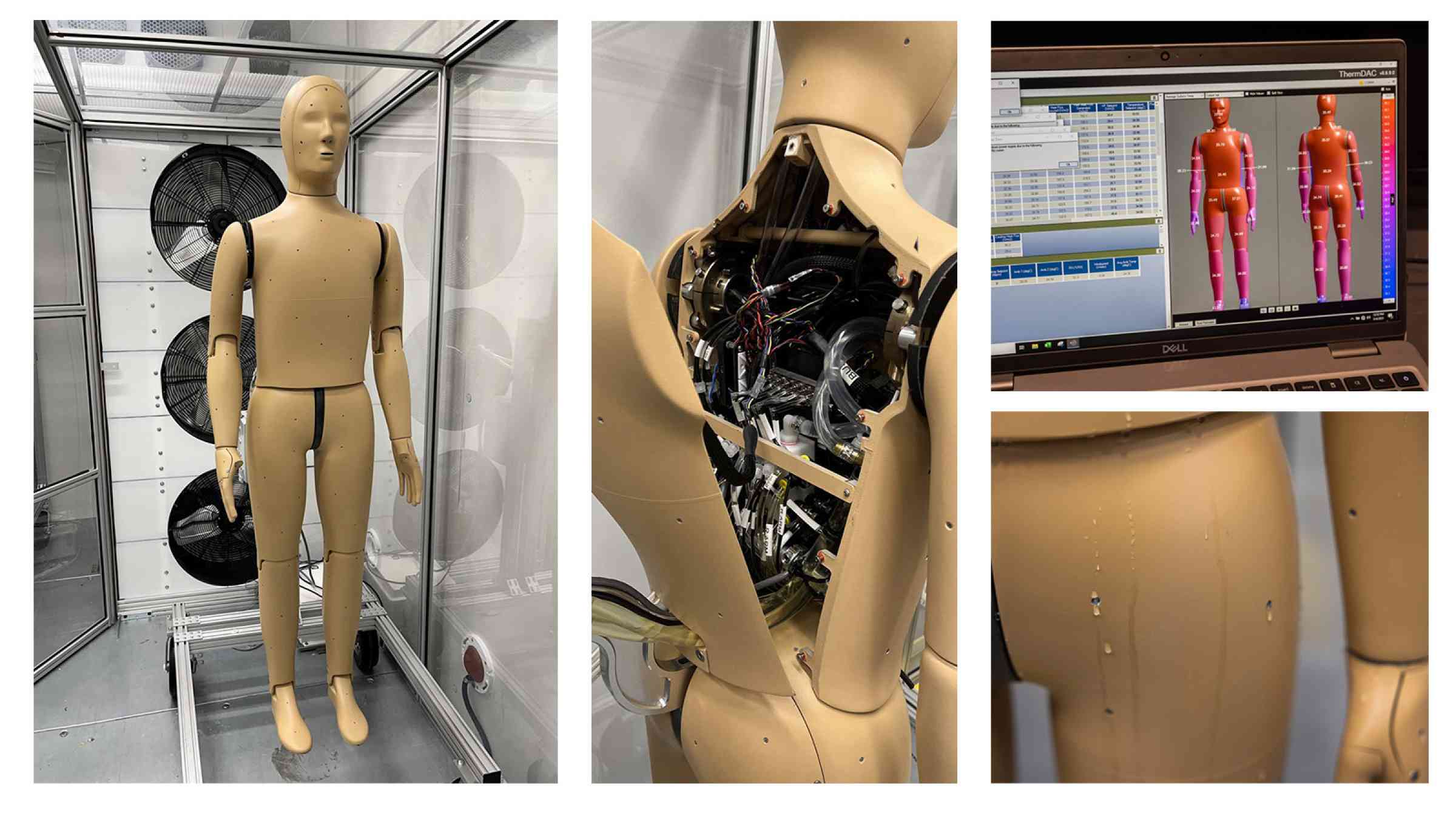Please help us improve PreventionWeb by taking this brief survey. Your input will allow us to better serve the needs of the DRR community.
This mannequin sweats, and it's helping ASU researchers understand heat stress

By the year 2100, the U.S. will experience more frequent and intense heat waves, especially in Alaska and states located in the Southeast and Southwest.
ASU engineers are trying to grasp how heat stresses the body, and they’re using ANDI — a breathing, sweating, walking and shivering mannequin — to do it.
“The instrument essentially measures heat load received by an average human body on 35 different body parts, and then it can also mimic the thermoregulatory system’s response to that,” said principal investigator Konrad Rykaczewski, associate professor in ASU’s School for Engineering of Matter, Transport and Energy.
Think of ANDI as a souped-up version of the thermal mannequins sportswear companies use to test their gear.
Under the research team’s guidance, the company Thermetrics customized its ANDI Thermal Manikin to pack sensors, cooling channels and even artificial sweat glands. It also did its best to acclimate the mannequin to Arizona summers.
“The system was entirely redesigned on the inside so it can handle high temperatures,” said Rykaczewski. “There's different materials that are used to make the cooling channels, so that they don't fail under the high temperatures that we could experience here in the summer.”
Together, the sensors, internal monitors, and about than 140 artificial seat glands simulate how a human body reacts to beating sun, sizzling temperatures, hot winds and reflected heat — not in a laboratory’s carefully controlled climate chamber, but in the chaotic and dusty outdoors.
“What we wanted was that instrument, but one not designed to just sit in the pristine thermal chamber, but one that routinely goes out in a real environment with real climate, dust and so on, and also very hot one,” said Rykaczewski.
He added that outdoor data remains troublingly sparse, and that he hopes ANDU will help fill in some of those gaps.
“It's just hard to add all the sun, all the heat emitted by the surfaces, turbulence, the clear sky; it's much easier to just go outside,” he said.
That lack of data means some seemingly straightforward questions remain open, such as whether Arizona’s infamous hot winds actually heat the body or cool it by evaporating sweat from people’s skin.
“There’s a lot of disagreement in the literature on how much that wind heats you and then also how much sweat evaporates,” he said.
Rykaczewski says the team hopes putting some solid data behind heat stress outdoors will inform future heat mitigations strategies and the engineers who design and build them.
“So this could be something like clothing, right?” he said. “How do you optimize clothing, or use the variety of novel materials that have been proposed in the last 10-15 years, to really minimize the heat gain by a person in the real Arizona environment?”
ANDI can also simulate a variety of health conditions.
Later this summer, the mannequin will pair up with MaRTy, a mobile instrument platform that measures air temperature, humidity, wind speed and direction and the average temperature of surrounding surfaces.
Eventually, researchers will use ANDI to study specific heat-stressed environments such as unshaded streets and homes without air conditioning.
The research is funded by a National Science Foundation grant under a program called LEAP HI (Leading Engineering for America's Prosperity, Health and Infrastructure), which supports engineers in taking leadership roles to address key challenges.
Explore further
Please note: Content is displayed as last posted by a PreventionWeb community member or editor. The views expressed therein are not necessarily those of UNDRR, PreventionWeb, or its sponsors. See our terms of use
Is this page useful?
Yes No Report an issue on this pageThank you. If you have 2 minutes, we would benefit from additional feedback (link opens in a new window).